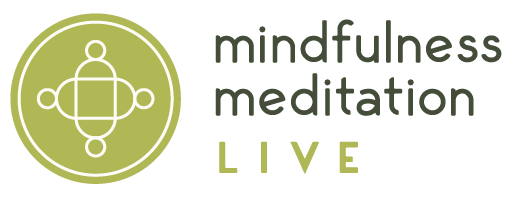How to (re)Start
Maybe you saw an article about the benefits of meditation. Maybe a health-care provider recommended that you start a mindfulness practice. Maybe you are feeling desperate for relief from stress, burn-out, or pandemic fatigue. Maybe you are just curious about meditation.
A well-known meditation master, Ajahn Chah said, “If you can breathe, you can meditate.” This may sound overly simple, but it’s true! Yet, getting started might feel weird or daunting at first. You probably have questions. What’s the right kind of meditation for me? How long should I practice for? How do I sit comfortably? How do I know I’m doing it “right”?
We were beginners once, too. Here are our tips for getting started.
You already have everything you need
You have a mind, you have a heart, you have a body: you already have all that you need. This technology is very portable! Commit a few minutes a day to sit quietly and just be with your breath as an anchor. (Even three minutes is excellent!) If the breath is a bit tricky for whatever reason, other anchors can work just as well: sounds, sensations in your hands, points of contact with the chair or the floor. You might put a timer on. Put your phone on airplane mode and put away anything that you that may distract you from your practice.
Try to be curious and non-judgmental about your experience. See what comes up for you each time, as you get more comfortable with it, as you work your way up to longer sessions. Notice how you feel as you start and end.
An essential part of practicing is embracing “beginners mind.” This means coming to practice each day without expecting anything, not even the ideas that you might have about how meditation should go. Thinking will not stop, but you do not need to get too involved in the content of the thoughts.
Apps and free on-line resources
For some people, a meditation app can be a great way to get a practice started. Apps can introduce you to some simple instruction, or help you get used to using a meditation timer. Apps are also great for on-the-go support, when you want to fit in a few minutes of meditation on the subway to work, or before a meeting or a difficult conversation.
In recent years meditation apps have become increasingly user friendly, thoughtful, and substantive. They can provide coaching, or even entire courses that you can do at your own pace.
You should also know there are many, many free resources on-line, so you don’t need to depend on an expensive app to explore the possibilities.
There are some risks in practicing alone without an instructor or a community. If something very unsettling arises, it’s helpful to have someone to speak with. Also, people who only use apps report that they often struggle with getting physically comfortable, or with staying awake because they are “too comfortable” – likely because they are not receiving feedback on their posture during practice.
Explore posture
Posture can be tricky. Mindfulness meditation is not supposed to cause (more) pain! It’s important to take care of the needs of your body in order to find stability and ease. This is especially true if you are dealing with injury or chronic pain, or struggling to stay awake during practice.
There are some helpful resources on posture you can find on-line, but live feedback from an instructor who can see you (and listen to you!) can make a big difference.
Many people sit the way they think they should sit to look a certain way, but much of the time this is misleading. Everyone’s body is different. What’s right for someone else may not be the best fit for your particular practice. Don’t be afraid to experiment with new and different sitting positions and postures: on the floor, in a chair, or even walking or standing. And if standing or walking is more comfortable, go with it!
Get off to a strong start with a course
Like learning any new skill, building a meditation practice often “sticks” better when (re)launched with the support of an experienced instructor and a group course. A class structure is great for a number of reasons. You immediately become a part of a temporary community, one that’s often full of other practitioners who have similar questions, challenges, and motivations.
It can feel unsettling or disheartening to not ‘get’ a practice immediately; but when you’re surrounded by others going through the same learning process, everyone can see how their struggles are actually quite normal. Group practice is also a great way to get comfortable talking about your practice with other people. One of the marks of a skilled instructor is their ability to create a supportive learning environment that holds the group and its processes well. By the end of a course, many report that the group itself has become a kind of teacher. Some groups decide to continue practicing together long after the course has completed.
Embrace your inner (re)beginner
Life happens. Maybe you had a meditation practice, and then you changed jobs, or lost your job, or started having to home school your kids through a global pandemic… and there seemed to be no time to practice.
One best kept secret among adult meditators: the blessings of children’s meditation books! There are some lovely illustrated books that you can enjoy, reconnecting through them with your inner beginner – and with the simple wonder of being alive.
So how do you get back on track? You might find a meditation buddy, children’s book, or alumni class. You might even retake a class; there’s no shame in taking an intro class twice! Just like no two practices are the same, no two classes are ever the same.
In short, the practice is cyclical. Re-boot, re-start, and re-begin!
© MML Editorial Team, 2021

